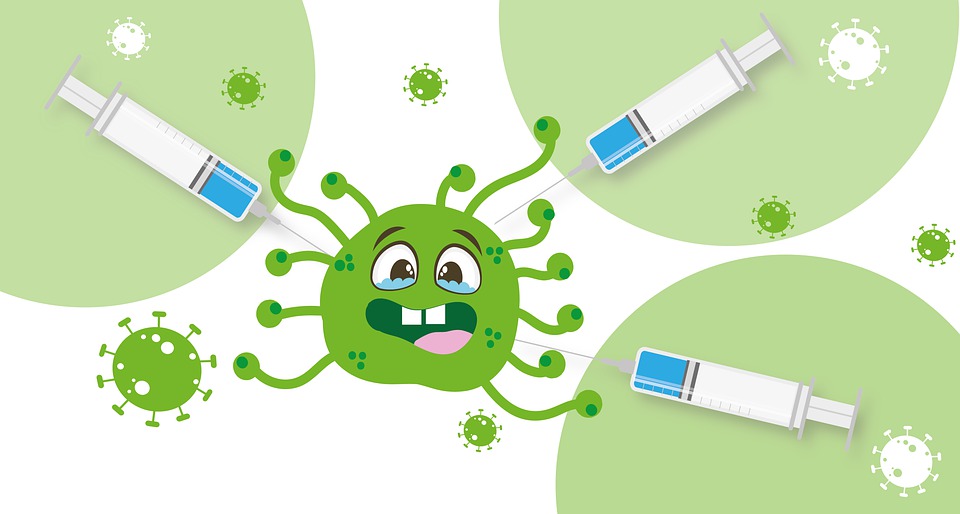The outbreak of novel Coronavirus Disease 2019 (COVID-19) a fast-spreading respiratory disease caused by severe acute respiratory syndrome coronavirus 2 (SARS-CoV-2), has affected the lives of more than thousands of hundred people globally. In December 2019, Chinese public health authorities reported several cases of acute respiratory syndrome in Wuhan City, Hubei province, China and the disease has since spread around the world to cause a pandemic. The first confirmed imported case in Nepal was reported in the 2nd week of January 2020.
While many countries were supporting their inhabitants with adequate health safety and various relief funds, some developing countries have unique challenges with vulnerable populations and limited resources to respond to the pandemic. In this unconditional circumstance, the necessity of a protective vaccine is required to achieve sufficient herd immunity to SARS-CoV-2 infection to ultimately control the COVID-19 pandemic. Eventually, researchers have been aggressively working around the clock to develop a vaccine against COVID-19 globally. Presently, the World Health Organization (WHO) has listed more than 200 COVID-19 vaccines as under development, with more than 60 COVID-19 vaccine candidates in clinical trials, and expecting for effective prophylactic. It is working in collaboration with scientists, business, and global health organizations to speed up the pandemic response. To develop a safe and effective vaccine, pre-clinical and clinical trials need to be performed with observation to avoid severe adverse effects.
The success of vaccines in avoiding disability and death from other infectious diseases justifies the optimism that preventive immunizations will control COVID-19. Between 2011 and 2020, it is expected that vaccines against infectious diseases saved at least 23 million lives.
By January 2021, 69 vaccine candidates were in clinical research, including 43 in Phase I–II trials and 26 in Phase II–III trials. In Phase III trials, several COVID‑19 vaccines demonstrated efficacy as high as 95% in preventing symptomatic COVID‑19 infections. As of January 2021, nine vaccines have been authorized: two RNA vaccines (the Pfizer–BioNTech vaccine and the Moderna vaccine), three conventional inactivated vaccines (BBIBP-CorV from Sinopharm, BBV152 from Bharat Biotech, and CoronaVac from Sinovac), three viral vector vaccines (Sputnik V from the Gamaleya Research Institute and the Oxford–AstraZeneca vaccine), and one peptide vaccine.
After the decision made by the expert panel on COVID-19 of the Department of Drug Administration (DDA), Nepal on dated 15th Jan 202. The government of Nepal has granted permission for the emergency use of the ‘Covishield’ vaccine, being manufactured by the Serum Institute of India (SII), starting Friday, 27 Jan 2021.
Similarly, Nepal has implemented phased distribution plans that prioritize those at the highest risk of complications, such as the elderly, and those at high risk of exposure and transmission, such as healthcare workers to get the coronavirus vaccine beginning a three-month vaccination campaign. The existing pandemic situation, case of infections and mortality, available science, and lack of definitive treatments were considered by the subject expert committee on Covid-19. AstraZeneca and Oxford University collaborated to develop Covishield, which will be produced by SII. The world’s largest vaccine maker, the Pune-based Serum Institute of India (SII), has partnered with AstraZeneca to produce Covishield. The Oxford vaccine (ChAdOx1 nCoV-19) is created from a genetically modified weaker variant of a common cold virus (adenovirus) that cannot develop in humans. The collaboration between Oxford University and AstraZeneca was critical to the vaccine’s successful development and global manufacturing and distribution.
As announced on November 23, the primary efficacy endpoint based on a pooled analysis showed that the vaccine was 70 % effective at preventing symptomatic Covid-19 occurring more than 14 days after receiving two doses of the vaccine. After several kinds of research, study, and trials, researchers have found a “winning formula” on 27 December 2020 in form of the Oxford–AstraZeneca COVID-19 vaccine, where two doses were used. It is stable, easily manufactured, transported, and can be stored at (2-80C), so can be easily administered in existing healthcare settings of Nepal, allowing for the vaccine to be deployed very rapidly.
COVID-19 vaccination can help protect you by eliciting an antibody response in your body without requiring you to become ill with the virus. A COVID-19 vaccine may help you avoid contracting the virus. Alternatively, if one is infected with COVID-19, the vaccine may protect one from being extremely unwell or developing major consequences. Getting vaccinated also might help protect people around you from COVID-19, particularly people at increased risk of severe illness from COVID-19. However, a COVID-19 vaccine can cause mild side effects after the first or second dose, including Pain, redness, or swelling where the shot was administrated, fever, fatigue, headache, muscle pain, and joint pain. It is always recommended to monitored for 15 minutes after getting a COVID-19 vaccine to see if any immediate reaction. The majority of side effects occur within the first three days of immunization and last one to two days. Moreover, the vaccine may also cause side effects similar to signs and symptoms of COVID-19. The vaccine is safe and there is nothing to fear about its side effects. “Pain, mild fever, and allergy are some very common side effects of every vaccine.
If someone has been exposed to COVID-19 and develop symptoms more than three days after getting vaccinated or the symptoms last more than two days, it is highly suggested for self-isolate and get PCR tested for further confirmation. If in cases one has a chronic medical condition with a higher risk of serious illness, consult with the doctor about other ways to protect. Additionally, people still need to be attentive to prevent the further spread of Coronavirus by following precautionary measures like wearing a mask, maintaining hand hygiene, and a physical distance.

